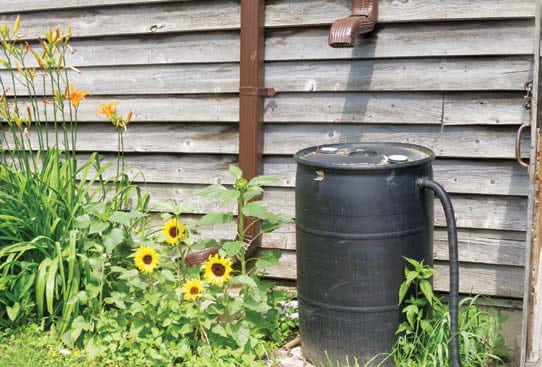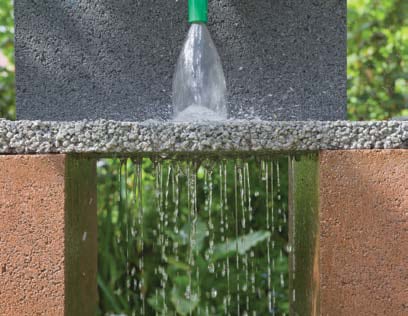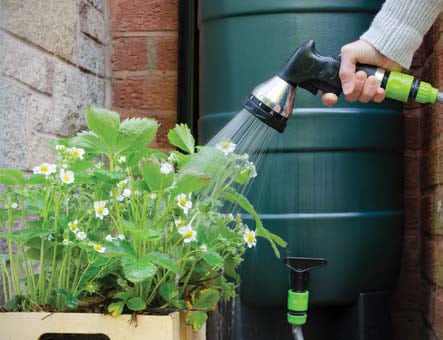The National League of Cities (NLC) Service Line Warranty Program helps residents of participating municipalities repair or replace thousands of water and sewer laterals every year. The program has helped more than 140,000 residents complete more than million in repairs, one of the largest investments in private infrastructure in the nation. These repairs have helped to firm up municipal infrastructure and reduce the strain on water treatment facilities. The program is dedicated to helping protect the water systems that are vital to communities, and continuing to educate homeowners and municipal leaders on ways to improve sustainability.

Recently, the NLC Center for City Solutions and Applied Research released a report that discusses ways in which municipalities can help sustain our natural resources by reinforcing our nation’s infrastructure. The concept, known as Green Infrastructure, uses nature’s design and integrates the existing ecosystem into a city’s urban environment. The report states that the easiest and most effective means of easing the stress on conventional water drainage systems is to reduce the volume of water that enters the system by increasing the permeable surface area, and allowing more water to be absorbed by soil and vegetation.
The NLC offers five examples for achieving a Green Infrastructure. The following two examples can be easily implemented.
Rain Gardens
A rain garden is a planted area in a shallow depression that receives stormwater runoff from an adjacent impervious surface such as a roof, driveway or parking lot. The rain garden prevents floods, reduces stress on the sewer system and may even conserve water resources by reducing the demand for irrigation. This green infrastructure option can be low-tech, inexpensive, sustainable and visually attractive.
“A University of Washington study of four permeable parking lots found a 97 percent reduction in surface runoff compared with traditional concrete.” -NLC Municipal Action Guide, April 2011
Water Harvesting
Capturing rainwater to be used for irrigation projects saves potable water resources and consequently reduces the energy use, financial costs and emissions associated with transporting water to homes, businesses and industry. According to the U.S. EPA, outdoor irrigation accounts for nearly a third of residential water use nationwide, at more than 7 billion gallons per day. Solutions include collecting rainwater in rain barrels or cisterns where permissible and directing downspouts away from the sewer system and toward catchment areas.

Partners of the NLC Service Line Warranty Program Participate in Green Infrastructure Projects
The NLC report features several of the NLC Program’s partner cities. Kansas City, Missouri, a Program partner since 2013, launched the 100-acre Middle Blue River Basin Green Solutions Pilot Project. The project features 67 rain gardens and over 5,000 linear feet of permeable pavement and porous sidewalks. The project was the first federally approved Consent Decree to incorporate green solutions.
As part of its educational goal, residents collaborated with various professionals and city representatives on the final plan. The initial results show both a reduced peak volume and flow at the outlet area. Kansas City will apply these lessons to further green installations for years to come. Project planners hope to see a decrease in overflow from 6.4 billion to 1.4 billion gallons per year.
In Program partner city Tucson, Arizona, where the average rainfall is only 12 inches per year, city officials have led the way in implementing water harvesting conservation strategies since 2014. In 2008, the city council adopted the nation’s first ordinance requiring rainwater harvesting at new commercial sites, requiring that commercial sites collect rainwater to meet 50 percent of landscape demand and specify a rainwater harvesting strategy. Residential outreach further supports these efforts, including water efficiency guides and water harvesting rebate programs. Tucson’s average daily residential water consumption (known as “per capita” water consumption—gallons per capita per day, or gpcd) is now generally 90 gallons, well below the average rates in other parts of Arizona and the western United States.
NLC Service Line Warranty Program
In addition to green programs, these cities have introduced the NLC Service Line Warranty Program to their residents. With this optional protection, a resident who experiences a leak or break on their private service line can have the problem repaired easily, without the difficulty of having to locate a reputable plumber and the funds to cover the cost. Fast repair of service line issues can reduce water loss and stress on the municipal treatment facility. The program plays an important role in educating residents about their service line responsibilities, complementing public outreach efforts made by city officials.
During the NLC Service Line Warranty Program’s Service Line Awareness Week 2016, a water conservation story and photo contest revealed that residents have already taken initiative with water harvesting. Residents shared stories and photos of their personal water conservation efforts. Check out their stories our Facebook page!
We can help to reduce our effects on the environment by reducing the amount of water in our water systems and the amount of energy it takes to process that water. To find out more ways to help your municipality achieve a Green Infrastructure, click here to see the full report .
See what residents and city officials in Kansas City, Missouri and Tucson, Arizona have to say about the NLC Service Line Warranty Program by clicking here.
Source: NLC Municipal Action Guide; Green Infrastructure: Using Nature to Solve Stormwater Challenges


